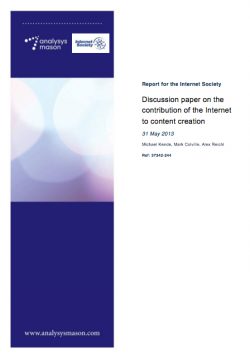There have been significant improvements to Africa’s Internet connectivity in the last five years. Enormous investment in telecoms infrastructure has characterised these improvements, especially in terms of intercontinental connectivity and terrestrial fibre networks: Submarine cable investment has amounted to around USD3.8 billion and terrestrial networks have seen over USD8 billion of investment. Internet exchange points (IXPs), used for local exchange of traffic, have become increasingly important in many countries.
However, these investments have not always translated into a corresponding improvement in the Internet access services experienced by users, through lowered prices or increased quality of service. In many countries the development of Internet access services is still held back by constraints on key inputs, notably in relation to the terrestrial connectivity between the submarine cables, the IXPs, the ‘last-mile’ access infrastructure – whether fixed or wireless – and the Internet service providers (ISPs) that deliver access to the end-users in Africa. As discussed in this report, policy remedies are required that remove roadblocks to new market entry and expansion, promote of investment by providing clear rules, and provide strong political leadership to achieve ICT goals.
This paper examines the factors that are obstructing the further development of the Internet ecosystem in Africa and the implications of those obstructions. It goes on to explore the possible remedies that can assist in resolving them. It follows on from a previous study on the impact of IXPs in Kenya and Nigeria, which found that IXPs can and do improve the quality of Internet services and save African operators millions of dollars per year in connectivity fees – but that a key factor in the success of IXPs is the availability of good domestic connectivity.
In this paper we look specifically at international connectivity, national backbone and ‘middle- mile’ elements of the value chain as well as any obstacles to competitive Internet access services. Our analysis and conclusions are based on desk research as well as interviews with stakeholders from across the continent.
